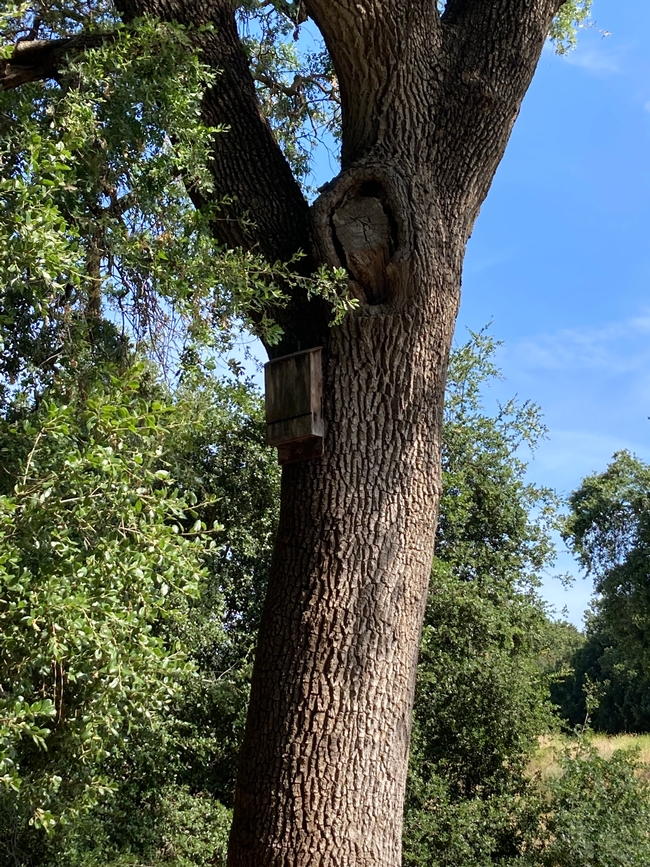Bats
June is Pollinator Month, and Pollinator Week is June 17th – 23rd. Most people can name pollinators- bees, butterflies, moths, and birds- but they don't always remember bats. Bats pollinate at night, which may be why they don't always get credit for their work. We don't usually see them in action. Bats search for big white or pale, funnel or tube-shaped flowers with strong fruity fragrances. They carry the pollen from the blooms on their fur and faces. These nectar-filled flowers belong to more than 300 food-producing plants and a plethora of evening bloomers. Most of the food-bearing plants are grown in desert or tropical regions and include bananas, guavas,mangos, cacao, dates, and cashews, and around here include figs and peaches. Flowers include evening primrose,nicotiana, datura, yucca, and French marigolds. For more examples of moon garden flowers, visit the Carolee Shields White Flower Garden and Gazebo at UC Davis Arboretum located at the southwest end of the arboretum near the Veterinary Medical Teaching Hospital. Not far from the moon garden is a bat box attached way up in a tree near the equestrian area.
If you drive across the Yolo Causeway at dusk on a summer night, or take in a Bat Talk and Walk with Corky Quirk, NorCal Bats founder, you may get to see a lot of these amazing mammals, when approximately 250,000 to 300,000 Mexican free-tailed bats stream from under the causeway, their summer home and the site where they come to give birth. Their diet includes armyworms, cutworms, moths, and other agricultural pests. They will soar two miles up to capture their prey and patrol up to 30 miles each night and eat about one-half their weight in pests each night. Pregnant and nursing bats can ingest their own weight in moths each night! One bat can consume 600 mosquitoes per hour. The area these bats, and also a lesser number of big brown and Yuma bats, cover is a fair amount of our country's sushi rice basket and also includes several fruit and nut orchards.
Bracken Cave Preserve near San Antonio, Texas has a spectacular show from March to October of 20,000,000 pregnant or nursing Mexican free-tailed bats creating what looks like a tornado on meteorology screens as they exit the cave at dusk to search for food for themselves and their pups. Each female bat gives birth to one pup usually in late June. That pup is born naked. Warmth is crucial for survival, so the pups are packed together as much as 400 pups per square foot. Mom recognizes her pup by its scent, vocalizations and by her own memory of where it is in the cave, and she returns to it several times during the day and a couple of times per night to nurse and feed it.
If you want to try to attract bats to your vegetation, the ideal bat house is made of rot-resistant, non-pressure-treated wood like white oak or cedar with 4 chambers inside, painted with oil-free, dark-colored paint on the inside, well-caulked on the outside to stop drafts and mounted 10-20 feet off the ground, ideally away from trees to keep predators out. The boards for the chambers should be roughened up first. This allows the bats to climb from the bottom of the house upward. Poles or buildings are better options for mounting. The bat house needs to get at least 6 hours of direct sun exposure every day to keep the young warm. (The sun-blasted asphalt on the Yolo Causeway is what keeps the bat babies incubated in the expansion joints under the bridge.) A water-source less than 200 feet from the bat house is preferred, but it doesn't have to be a lake or even a pond. A cattle trough filled with water will do. If you have ever hiked at Lagoon Valley near dusk during the summer, you might have seen bats zooming and dipping over the troughs on the hills grabbing a quick drink.
Bats are sometimes feared in our culture, but China and other Asian nations consider them good fortune. If you look closely at museum art from that part of the world, it is not unusual to find bat depictions. Bats make up nearly a quarter of all mammals on Earth, and they are amazing workers and pollinators, too!

IMG 0584

IMG 0585

